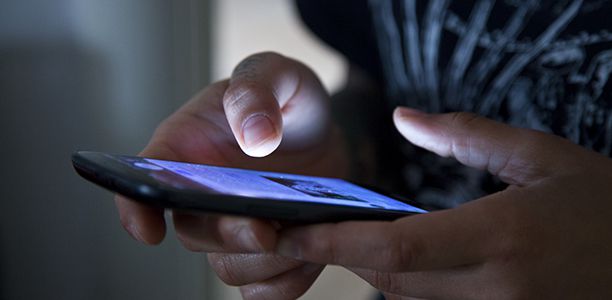Study investigates the effects of mobile phone emissions on the sleeping patterns of kids and teens.
A world-first study investigating the effects of mobile phone emissions on the sleeping patterns, brain activity and cognitive performance of children and adolescents will start this week at the Illawarra Health and Medical Research Institute (IHMRI) on the UOW campus.
The researchers, led by sleep expert Dr Sarah Loughran, are recruiting children between 10-18 years, initially from Wollongong, before asking for participants from the greater Sydney region.
Participants will sleep in comfortable single beds at IHMRI’s new state-of-the-art sleep laboratory and be monitored overnight by a scientific team who will use high tech equipment to determine if radiofrequency electromagnetic field (RF EMF) exposure influences the brain during sleep.
“Previous international studies with adults have shown that RF EMF emitted from mobile phones affects brain activity, as measured by electroencephalogram (EEG), during non-rapid eye movement sleep,” Dr Loughran, who holds dual roles at IHMRI and UOW’s School of Psychology, said.
“Although we have not been able to establish any negative or adverse health effects in adults following RF EMF/mobile phone-like exposures, it is important to investigate these exposures in children as they may be more sensitive to such exposures given that their nervous systems are still developing and that brain maturation is not yet complete.”
Dr Loughran said the increased use of mobile phones among children and adolescents has added to concerns about the potential effects of exposure in younger populations.
These concerns have been stressed by the World Health Organisation, which identified studies in children of different ages, as well as studies validating the effects on the EEG and the identification of key neurobiological mechanisms, as high priority research areas in its recent RF EMF Research Agenda.
Through the IHMRI-based Australian Centre for Electromagnetic Bioeffects Research (ACEBR) and Population Health Research on Electromagnetic Energy Centre (PRESEE), based at Monash University in Melbourne, several researchers are investigating the broader health effects of RF EMF exposures from mobile phones, base stations, WiFi and other wireless technologies.
“This study is one of more than 20 currently underway through these centres, which have received grants worth $5million from the National Health and Medical Research Council, which shares the concerns of the World Health Organisation,” added Dr Loughran.
(Source: University of Wollongong)










